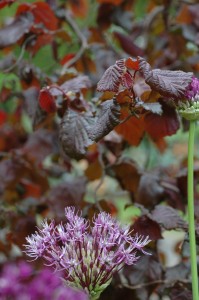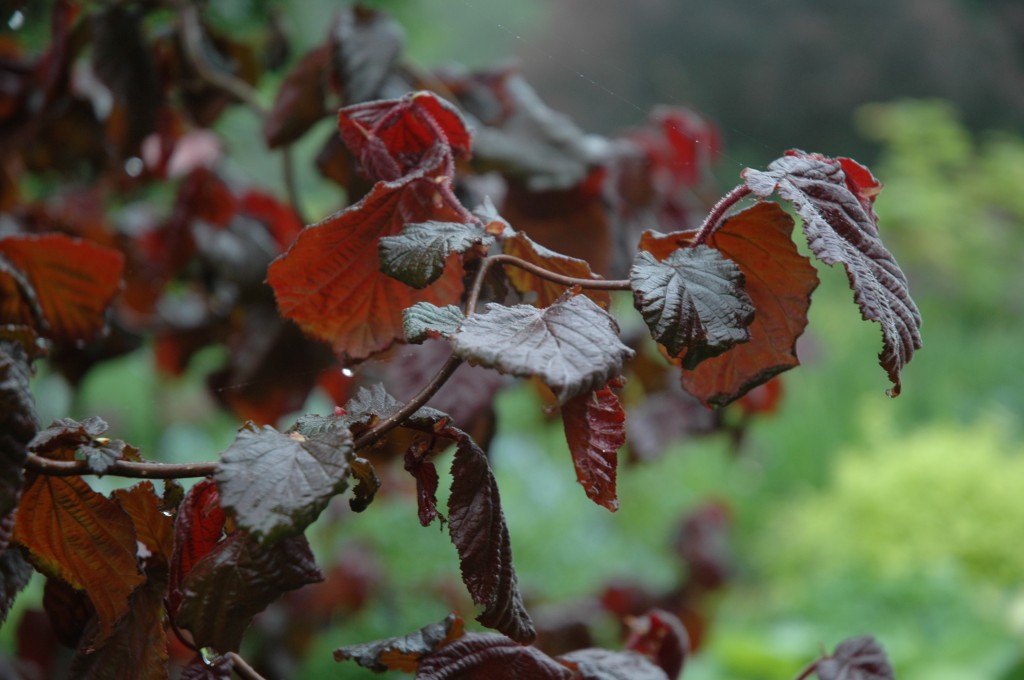 You don’t need me to preach the Four Season Interest gospel. From your comments, I’m guessing that you’re all pretty well versed in these pursuits and no one needs to nudge you to make the scene stupendous throughout the year. Of course you want maximum mileage out of every plant on the premises. That’s why I invited Corylus avellana ‘Contorta’ into the clan years ago. And that’s why I clenched my fist in its general direction years ago.
You don’t need me to preach the Four Season Interest gospel. From your comments, I’m guessing that you’re all pretty well versed in these pursuits and no one needs to nudge you to make the scene stupendous throughout the year. Of course you want maximum mileage out of every plant on the premises. That’s why I invited Corylus avellana ‘Contorta’ into the clan years ago. And that’s why I clenched my fist in its general direction years ago.
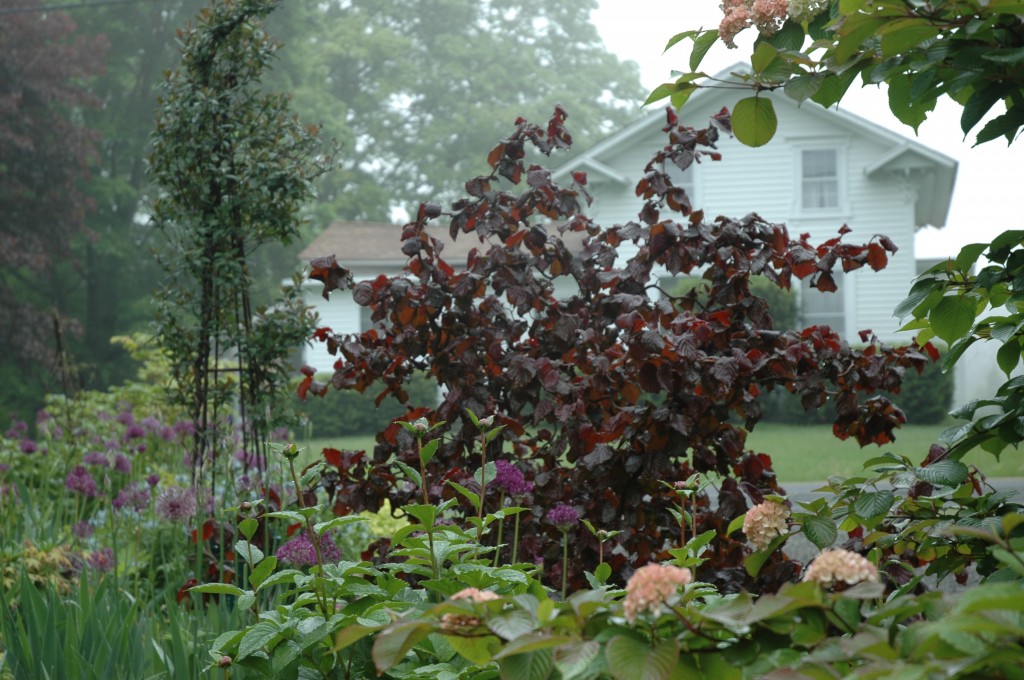 Sure hope no one recorded the moment that I vowed never to grow another Harry Lauder’s walking stick. If you weren’t around with a microphone a few years ago when the plain vanilla corkscrew hazel was being escorted off the property, then I’m safe. I put it in because I’m kinky. And so is Corylus avellana ‘Contorta’. Problem was, it only really looked good when it was naked (definitely my polar opposite). Which was in winter. In summer, it was a blob of unwieldy proportions. With time, it looked even more like a whale with leaves. I was delighted when it died. At last, Corylus avellana ‘Contorta’ was perennially naked. It would never trouble me with its ragged clothing again. But who wants a skeleton in summer? Finally, even the corpse was bounced.
Sure hope no one recorded the moment that I vowed never to grow another Harry Lauder’s walking stick. If you weren’t around with a microphone a few years ago when the plain vanilla corkscrew hazel was being escorted off the property, then I’m safe. I put it in because I’m kinky. And so is Corylus avellana ‘Contorta’. Problem was, it only really looked good when it was naked (definitely my polar opposite). Which was in winter. In summer, it was a blob of unwieldy proportions. With time, it looked even more like a whale with leaves. I was delighted when it died. At last, Corylus avellana ‘Contorta’ was perennially naked. It would never trouble me with its ragged clothing again. But who wants a skeleton in summer? Finally, even the corpse was bounced.
 So I figured = End of story. Then along came Trade Secrets. It wouldn’t be the first time that the guys at Broken Arrow Nursery (www.brokenarrownursery.com) turned my head. And I marched home with their one and only Corylus avellana ‘Red Majestic’. That was a few years ago, and now it’s readily available. But to give credit where due — Broken Arrow was precocious. As usual.
So I figured = End of story. Then along came Trade Secrets. It wouldn’t be the first time that the guys at Broken Arrow Nursery (www.brokenarrownursery.com) turned my head. And I marched home with their one and only Corylus avellana ‘Red Majestic’. That was a few years ago, and now it’s readily available. But to give credit where due — Broken Arrow was precocious. As usual.
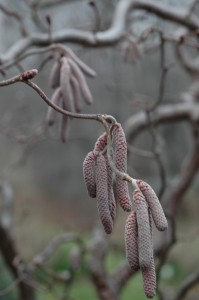 Okay, here’s the description = deep wine-colored leaves that start spring lining the stems with fiery red, pleated leaf buds like folded mouse ears. But before that, those same twisting, turning stems bear little bundles of cone-like, dangling catkins. And even before that, this curvaceous exhibitionist doesn’t disappoint when it’s parading around naked, silhouetted against the snow. My ‘Red Majestic’ is more compact than ole ‘Contorta’ so it forms a perfectly proportioned package. The fellows at Broken Arrow warned that it could send up green shoots occasionally, which it does every once in a while. A few snips, and they’re gone.
Okay, here’s the description = deep wine-colored leaves that start spring lining the stems with fiery red, pleated leaf buds like folded mouse ears. But before that, those same twisting, turning stems bear little bundles of cone-like, dangling catkins. And even before that, this curvaceous exhibitionist doesn’t disappoint when it’s parading around naked, silhouetted against the snow. My ‘Red Majestic’ is more compact than ole ‘Contorta’ so it forms a perfectly proportioned package. The fellows at Broken Arrow warned that it could send up green shoots occasionally, which it does every once in a while. A few snips, and they’re gone.
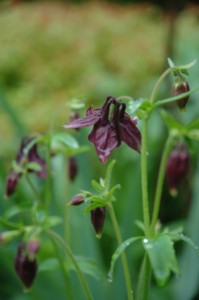 The foliage always looks wonderful. And I’ve been working the echoes ever since (check out the columbine). Although I’m not always big on dark-colored foliage, you need something like this to set off the hot colors of orange and red if you’re thus inclined (which I am). It’s genius with chartreuse. And the burgundy uncorks nearby purple blossoms to make them pop. So what do you think, all you purple appassionatas? It sure kept my alliums from melting into mauve visually. What’s your vote?
The foliage always looks wonderful. And I’ve been working the echoes ever since (check out the columbine). Although I’m not always big on dark-colored foliage, you need something like this to set off the hot colors of orange and red if you’re thus inclined (which I am). It’s genius with chartreuse. And the burgundy uncorks nearby purple blossoms to make them pop. So what do you think, all you purple appassionatas? It sure kept my alliums from melting into mauve visually. What’s your vote? 